launched in new Nakano campus, a hub for Internationalization


Japan
Thailand
Thailand
Japan
USA

In April of 2013, the Graduate School of Science and Technology's Architecture department launched its International Program in Architecture and Urban Design (I-AUD). All lectures and classes are conducted in English. How did the students choose this program? How do they like life in Tokyo? The following is a group interview with five students about their studies in I-AUD and their daily lives in Japan.

- Why did you choose Meiji University's I-AUD?
- What's it like living and studying in a Japanese-speaking society?
- Is it difficult as a Japanese student to get used to architecture classes in English?
- What are you currently studying?
- Which class or lecture has the biggest impact on your research?
- What are some characteristics you have noticed in Japanese architecture and urbanscape design?
- What would you say to those considering studying in Tokyo?
- What are your plans for the future?
- Please give a message to people applying to the I-AUD.

1. Why did you choose Meiji University's I-AUD?
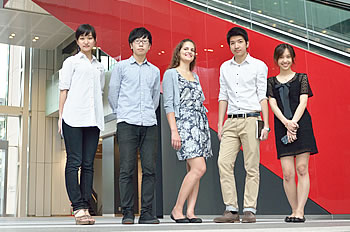
Tripoom
First of all, I chose Tokyo because I previously came to Japan for an exchange program and I've always felt quite close to Japanese culture and society. I like the urbanscape here and the technology. I-AUD mainly focuses on urban design, which is a topic that I'm interested in.
Soichiro
I was studying architecture at The University of Sydney when I was an undergraduate at Kyushu Sangyo University as an exchange student. I became increasingly curious about working overseas as a Japanese and taking advantage of my Japanese character, and I was looking for a university with an international program of some sort as well as architecture classes in English. That is how I found I-AUD. There is no other program like this in Japan. That's why I came here.
Annaliesa
Actually, I chose Meiji University for its exchange student program. I like how this program is mixed so you can discuss things with Thai, American and Japanese students. There is also a professor from Amsterdam. Usually, exchange programs are not like this. It's so nice to participate in the program together with people from other countries.
2. What's it like living and studying in a Japanese-speaking society?
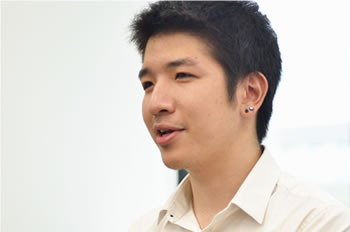
Tripoom
One of the reasons I came to Japan was to learn Japanese Language and to improve in it, so living in a Japanese-speaking society is very helpful. At the same time, I-AUD's program is conducted in English, so it's very nice to be able to have discussions about urbanscapes with students from different countries.
Jirapa
I want to improve my Japanese as well. Sometimes my friends speak to me in Japanese, which I really like because I feel closer when speaking in Japanese than when speaking in English with them. The problem is speaking with people at restaurants—they speak very fast because they don’t think I’m from a foreign country!
3. Is it difficult as a Japanese student to get used to architecture classes in English?
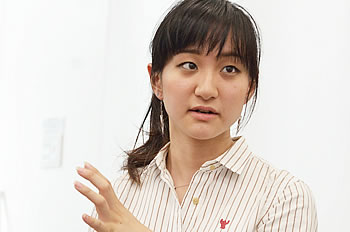
Saki
For me it's especially hard to write reports in English, but I think I am doing better now than three months ago when I started the program.
Soichiro
It is very hard to acquire architecture-related skills in English, but we have gradually come to understand more. Our professors say that all the Japanese students' English skills are improving day by day.
4. What are you currently studying?
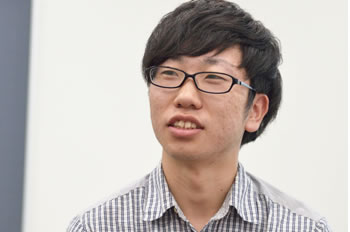
Soichiro
We are currently researching the Nakano district where our campus is located. That's our main subject for the studio class.
Jirapa
We focus on the Nakano area, and then we each pick a specific site in Nakano as an individual project to work on. It is very interesting and I have learned a lot about the history and current issues here. When I first came here, I knew nothing about this area, but I'm an expert now!
Tripoom
I came to understand that there are a lot of cultures here. The Nakano Sun Mall area is the place for otaku (nerdy people). On the other hand, there are also new developments here with an offices of global companies like the Kirin Brewery Company, a high status area, but we also have an area of high population density. There are contrasts here. I think that is one of the biggest draws in Nakano.
Annaliesa
In our studio class, we do analyses and presentations every week. We work in groups to examine urban design ideas over and over. I feel that all of our presentation skills are getting better.
5. Which class or lecture has the biggest impact on your research?
Saki
We have an evening lecture every other Friday. It's very interesting because a different architect or urbanscape designer comes here every other week as a guest lecturer. We learn many ways of thinking about the creation of architecture or design.
Soichiro
We once invited a landscape designer who had designed an area around our campus—a big park. He showed us many slides about the Nakano district's topography. That was really helpful for our research.
Jirapa
We also had a class about GPS, which was really interesting. I didn't know that GPS could be used for so much more than giving directions on a map. It can record the movements of people, and it is possible to utilize that data to research the urban district. I really enjoyed that lecture.
6. What are some characteristics you have noticed in Japanese architecture and urbanscape design?

Jirapa
Japanese architects concentrate on expressing every little detail. Little things are very important, and people care about them a lot. That's one characteristic I see.
Tripoom
Details are very important also with Japanese urbanscape design. Compared to the urbanscape of a country like the United States, it is very compact in terms of size. How things are changing around the city should be included in designing urbanscapes within its size—take the Metabolism movement (a post-war Japanese architectural movement of which the concept was taken from an image of organic biological growth), for example, which is about more than just consideration of aesthetics when designing urbanscapes.
Soichiro
When I go to other countries to see architecture, I realize that Japanese architecture is very clean and very simple. There are very few decorative elements.
7. What would you say to those considering studying in Tokyo?
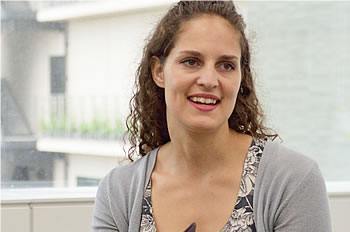
Annaliesa
Tokyo is very unique and has a strong character that you won't find anywhere else. I think that no other city looks like this. There are so many quiet places in the city and small neighborhoods as well. However, the city is very big so you can spend a lot of time exploring it. You will never be bored.
Soichiro
I came from Kyushu, in the southern part of Japan. I was quite surprised at the number of people I saw in Shinjuku Station, and at the urbanscapes here as well. It is a good opportunity to see the current situation in Japan from an architectural point of view.
Jirapa
Tokyo is easy to live in because everything is centered around train stations. You can go anywhere by train and walk to your destination from the station in 10 to 15 minutes.
8. What are your plans for the future?
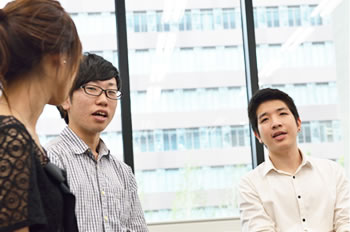
Saki
I'm interested in urbanscape design and city development, so I'm learning more about that now. But I really want to work more architect. I want to design and make more things like as buildings.
Tripoom
I will go back to Bangkok after I finish this program. Before coming here, I worked for a year at a real estate consulting company. Complete all of my study first, then to focus on working. Now I want more to go to real estate developer's company, maybe working in architecture department.
Jirapa
I will work in Thailand while maintaining my connections with Japan in some way. Urbanscape design is what I want to do in Thailand. My experiences in Japan will help a lot in my career.
9. Please give a message to people applying to the I-AUD.
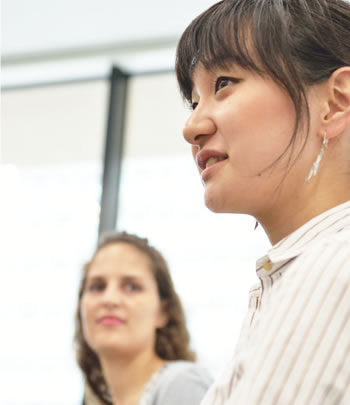
Annaliesa
I think there are many good professors here, and they are often in the studio. We are influenced in different ways by each professor. That's very nice, and the discussions among students and professors from different countries are meaningful.
Jirapa
In Thailand, most of the students are afraid of professors—when doing presentations, for example. It’s more relaxing here because they help us very much. We can express our own opinions honestly at any time, not only in the studio but elsewhere as well. They also help us outside of the classroom.
Tripoom
I want to encourage more students from other countries to come and participate in this program in order to make it more international.













